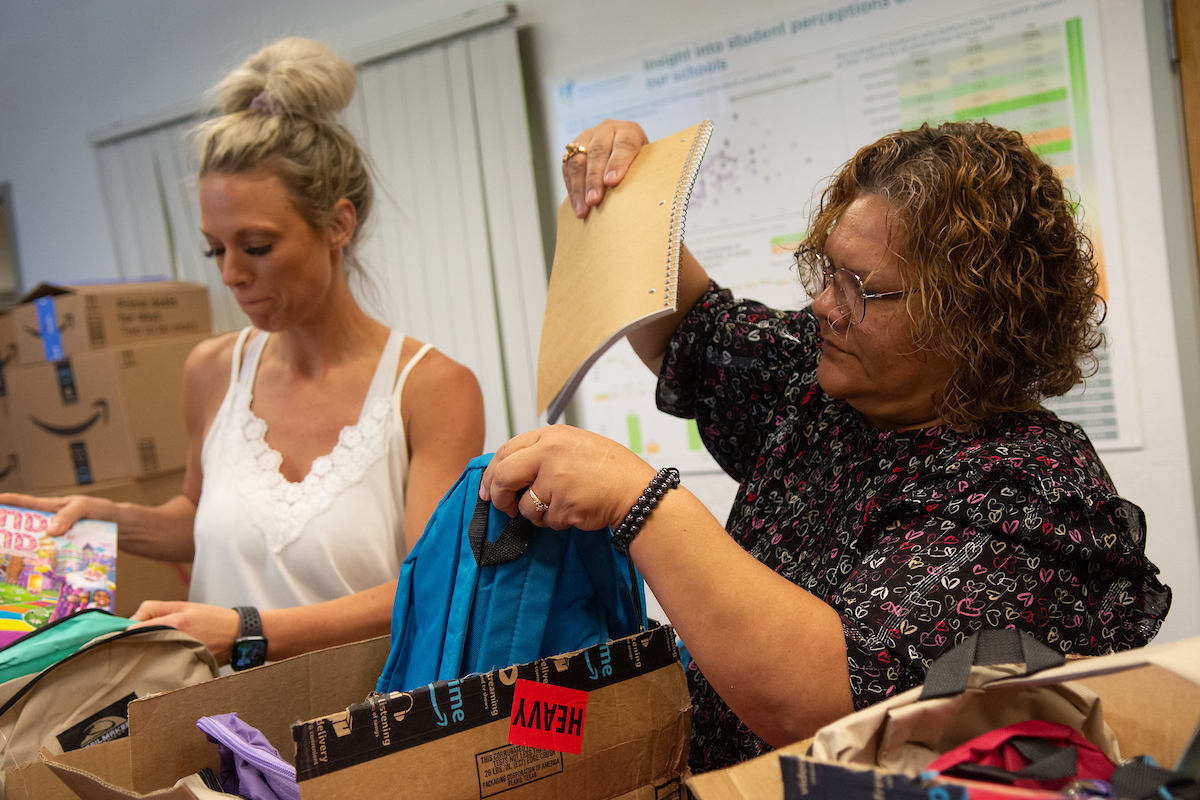Washoe school district to ramp up efforts for students experiencing homelessness

The Washoe County School District is allocating about $1.6 million in federal COVID relief dollars to boost efforts to identify and support students who may be experiencing homelessness.
As of late June, the district had identified about 2,000 students who were facing homelessness, but Rechelle Murillo, who oversees the district’s Children In Transition program, believes the real number might be higher in part because of the county’s rising housing costs as well as other pandemic-related challenges.
The district had trouble identifying and keeping track of some of these students throughout the pandemic, especially during school closures, Murillo added.
“I do think it's an underestimate based on our previous numbers of 3,000,” she said, referring to the number of students identified as experiencing homelessness during the 2017-18 school year. “I think families are still really struggling.”
Under the federal McKinney-Vento Homeless Assistance Act, a federal law that supports the education of students without shelter, homelessness is defined as the lack of a fixed, regular and adequate nighttime residence. This includes students living in emergency shelters, motels, cars, abandoned buildings and public spaces as well as students in families sharing housing because of economic hardship or loss of housing.
Each school has a homeless advocate who helps the six liaisons with the district’s Children in Transition program identify students in need. The liaisons can provide students, once identified, with assistance for food, school supplies, clothing, enrollment and fees for field trips, sports and extracurricular activities.
“We pay for those things so students can fully participate in their education,” Murillo said.
One of the rights the McKinney-Vento Act guarantees students is the ability to stay in their home school, even if they are staying somewhere outside of that school’s zone. The Washoe County School District provides these students with transportation or gas vouchers to help them get to their school. District data has shown that students who move schools while experiencing homelessness have lower graduation rates than those who stay at a single school.
“So we know it's really, really important for us to provide that support for them, because it has the consistency and the relationships there,” Murillo said. “They know their teachers, their peers, all of those things that we want to keep that part of their lives consistent.”
But the Children in Transition department struggled to stay in touch with previously identified students during the pandemic, when they were learning from home or were only coming to school for a few days a week as part of the district’s hybrid learning plan.
Even though in-person learning resumed full time this past school year, not all students were attending consistently. The district found in an analysis of its 2021 graduating class that 91 percent of students experiencing homelessness were chronically absent – or missed 10 percent or more of school for any reason – at least one year in high school, lower than the rate for the students with secure housing at 69 percent.
Murillo saw this absenteeism issue again during the last school year, when more than half of students experiencing homelessness were chronically absent.
“We rely for them to be in school to be able to identify them,” she said.
The district hopes to address that challenge by using the COVID relief funds to hire an attendance officer as well as an additional liaison, bringing the district’s number of homeless liaisons up to seven.
But it’s not just about identifying students experiencing homelessness. Murillo said the district also plans to help that student population by funding training for school counselors focused on suicide prevention, LGBTQ youth and substance use.
LGBTQ youth are 120 percent more likely to experience homelessness than non-LGBTQ youth, according to a study from Chapin Hall at the University of Chicago. Additionally, youth experiencing homelessness are more likely to attempt suicide or use drugs than their housed peers, according to research from the National Health Care for the Homeless Council and the National Library of Medicine.
Colin Usher, the Children in Transition’s program coordinator, also wants to create more awareness about various types of living situations that fit the McKinney-Vento Act’s definition of homelessness to help families who qualify for this support but don’t realize it.
“If they understand that they can send their information to us and get qualified for services, then that will help us with increasing the identification of those students,” he said.
During the summer, Usher said the department will also be following up with families of students the district has already identified to see how they’re doing.
